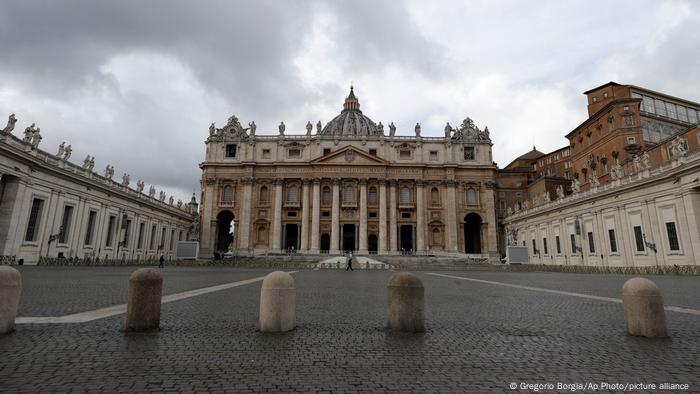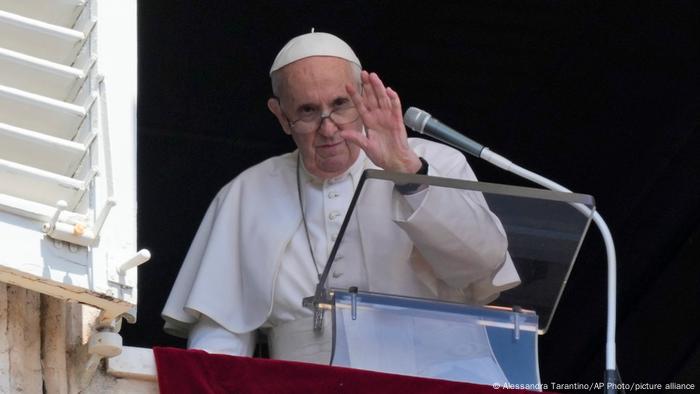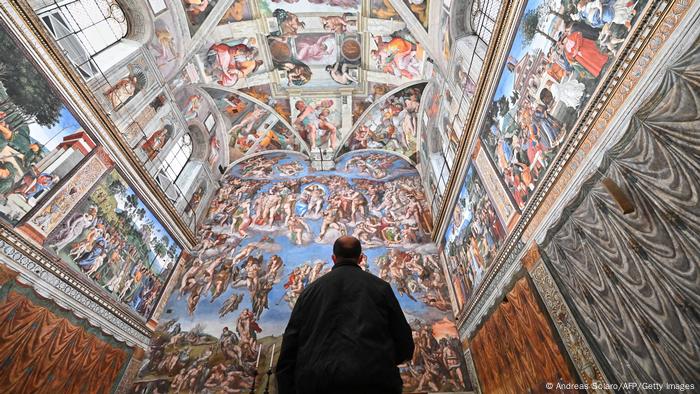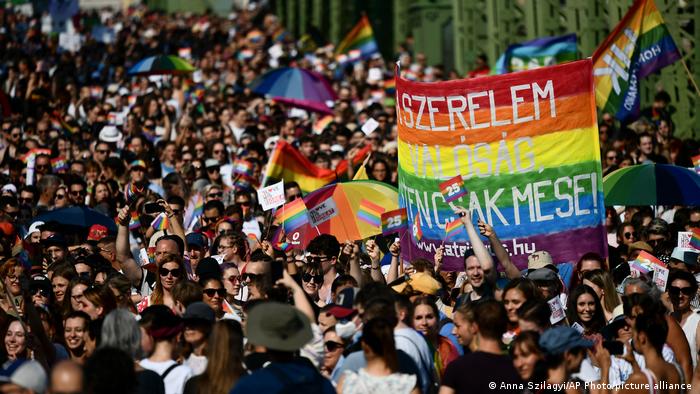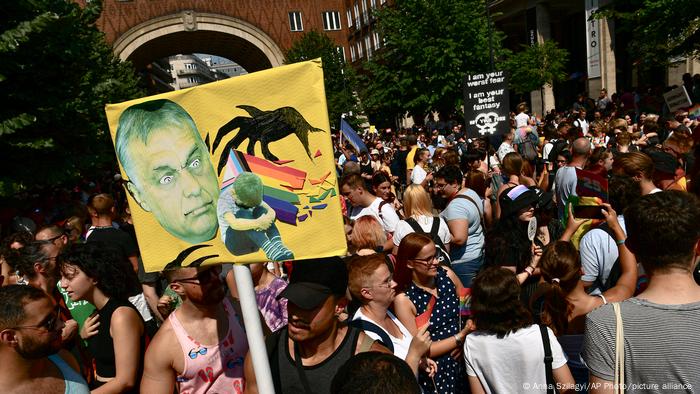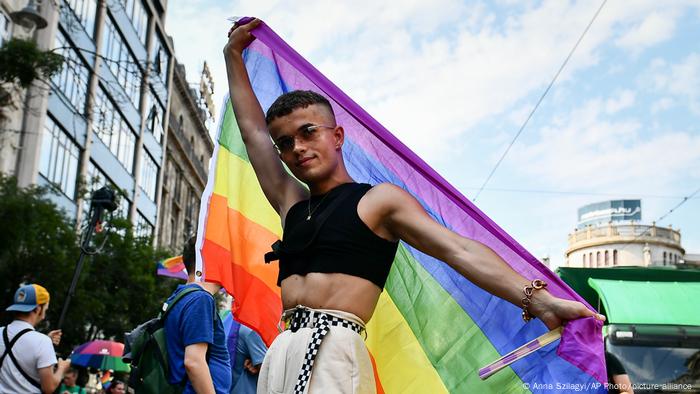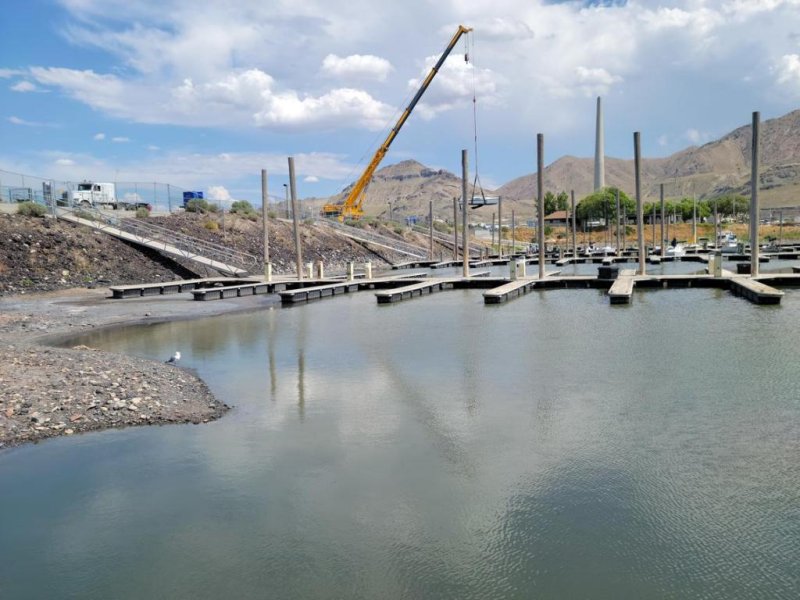ADAM ROGERS, WIRED.COM - 7/24/2021, 4:36 AM
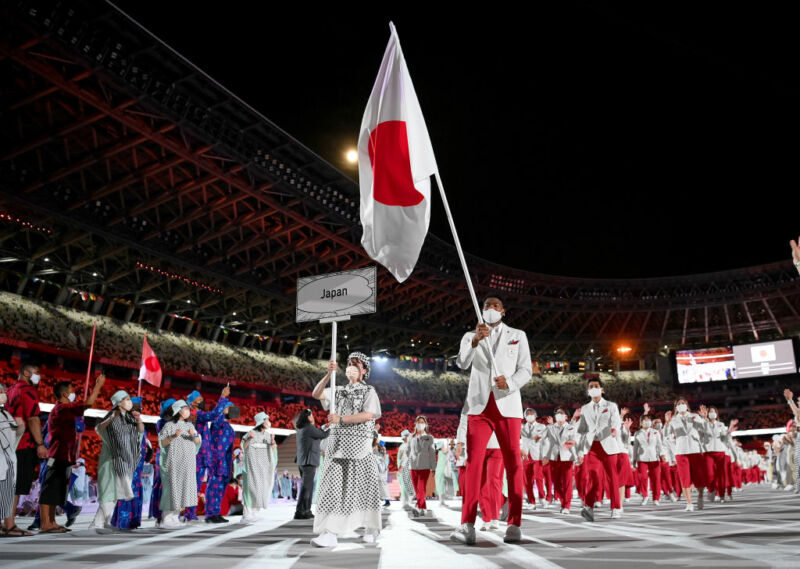
Enlarge / Flag bearers Yui Susaki and Rui Hachimura of Team Japan lead their team out during the Opening Ceremony of the Tokyo 2020 Olympic Games at Olympic Stadium on July 23, 2021 in Tokyo, Japan.
Matthias Hangst | Getty Images
Ten days before the opening ceremony of the Tokyo Olympics, Kara Lawson, the coach of the United States women’s 3x3 basketball team, gave a press conference. The sport is new to the Olympics this year, and Lawson, a former WNBA player and coach at Duke University, told the dozen or so reporters participating online what she liked about it—the game is faster-paced, Lawson said, and more unpredictable than the five-on-five version. But during a global pandemic, Lawson added, the health of her players was her number one priority. “We’re obviously tested daily. I’m actually quarantined in my room right now,” Lawson said. “We’re masked all the time … a positive test at this juncture is hard for any team getting ready to go to Tokyo. We’re focused on doing our part, not just so we can have a good competition, but we definitely feel a responsibility to fellow human beings to be smart about eliminating transmission of the disease worldwide.”
Less than a week later, one of Lawson’s players—Katie Lou Samuelson, a power forward for the Seattle Storm—announced on Instagram that she had tested positive for COVID-19 and wouldn’t be able to go to Tokyo. Fast-paced, maybe, but not exactly unpredictable. As the 2020 Tokyo Games get underway, Samuelson is one of 91 people either in Tokyo for the Olympics or who were hoping to go who’ve tested positive for the disease, including US tennis player Coco Gauf, a Czech beach volleyball player, two South African soccer players, and so on.

The story of disease is also a story of mass gatherings. In 1867, a cholera outbreak started at the Kumbh Mela in India, the world’s largest religious gathering. It spread from the banks of the Ganges to Russia and Europe. A million people died. Over the years, the Hajj pilgrimage has been the site of a bunch of respiratory disease outbreaks, including influenza and the coronaviruses that predate the one that causes COVID-19. In 2014 there were measles outbreaks at the International Dog Show in Slovenia, and at Disneyland.
But the Olympics has generally managed to avoid big infectious disease outbreaks, even when it happened during big disease scares. H1N1 influenza didn’t hurt the 2010 Winter Games in Vancouver, neither SARS nor MERS spread through London in 2012, Zika didn’t spread from Rio in 2016. Yet nevertheless, “What if people get sick at the Olympics?” is a top-three Olympic story subgenre. (The other two are “This athlete is driven to succeed for personal reasons” and “Olympic athletes have sex with each other.”)
Just one postponement
In early 2020, amid a pandemic then just beginning to swell into an exponential tsunami, the International Olympic Committee and the Tokyo organizers postponed the Games. An advisory group composed of experts from public health, travel medicine, economics, behavioral science, and even theme park design spent the gap year coming up with a plan. The person in charge was the one who was largely responsible for the successful public health measures at the London Games in 2012, a public health and mass-gathering expert named Brian McCloskey. “Essentially, the public health response to any event is the same. It’s about how you determine what the risks will be and what you do about them,” McCloskey tells me. “The difference here is the sheer scale, which we haven’t seen before.” Before the organizers closed the Games to travelers in March, they expected 20 million people to come to Tokyo. That probably wouldn’t have been great.
The Olympics are a strange beast. Even with the threat of deadly disease looming, all the stakeholders are highly incentivized to make sure the show goes on. The host country’s tourism industries stand to get a windfall, as do the media organizations covering the Games. Olympic committees are famously full of jet-setters with cozy relationships to all the businesses involved. And unlike, say, professional sports, where missing a couple games might not matter much, Olympic athletes and coaches get their shot only once every four years—so they might put up with a little looseness in infection control measures.
Still, nobody wants anyone to get sick. That advisory group determined that the basic public health measures people relied on before the arrival of Covid vaccines would still work. In fact, things like hand-washing, mask-wearing, and avoiding crowds and poorly ventilated spaces were already working well in Japan. “What we did was to layer on top of that some of the learning from the UK, where not having a test-and-trace system was a weakness,” McCloskey says.
You’ll remember this from the pandemic’s early days, when the US and Europe mostly failed at it: Test everyone for Covid, trace the contacts of the people who are positive, and isolate them to keep one person’s infection from turning into a super-spreading event. That’d be the approach in Tokyo, along with reducing the number of people in the Olympic Village, improving the ventilation systems in those apartments, and adding “additional filtration” and plexiglass shields (which probably don’t really do anything, but OK) in the common areas. And “by and large there is no intermingling between the international community and the local Japanese population,” McCloskey says. “They don’t go out in the subway in Tokyo.”
The organizers thought about requiring vaccination but ultimately decided against it. “We were fairly certain a vaccine would be available, but we were equally certain it would not be available equally around the world,” McCloskey says. “That’s against the whole spirit of doing the Games. We also didn’t want athletes competing for vaccines with health care workers and local populations.”
At a press conference just a few days before the Games were set to open, McCloskey described the system—codified for the competitors into “playbooks”—as one of multiple layers of filtration. Athletes would get tested before they left their home countries and again every day before competition. They’d follow social distancing rules, the non-pharmaceutical interventions of 2020. And if someone pinged positive, they’d get multiple kinds of tests, including a highly accurate nasopharyngeal PCR test, to see how high their viral load was and help determine the level of risk to the people they might’ve exposed. (More virus equals more bad.) Olympic staff would track their contacts, in part using forms the teams would fill out beforehand of who was close to whom. Vaccines, if athletes got them, would be a bonus layer.As for the Olympic-bound folks already testing positive, McCloskey said that didn’t constitute a failure in the system. Quite the opposite—each one represented the cutting-off of a more infectious timeline that might have been. “What we’re seeing is what we expected to see, essentially,” McCloskey told reporters in Tokyo at a press conference on July 19, a week before the opening ceremony. “If I thought all the tests we did would be negative, I wouldn’t be bothering to do the tests.”
Hey, 91 positive cases out of roughly 15,000 competitors and tens of thousands of reporters and other Olympic workers ain’t bad, right? For a few disease experts and athlete advocates, the answer is: That is, in fact, pretty bad—because of what it says about the preparations, and what might happen next.
Is a safe Olympics even possible?
At least that's what some scientists and experts have been saying. Hitoshi Oshitani, the virologist who devised Japan’s anti-Covid strategy, told The Times of London that he didn’t think it was possible to have a safe Olympics. “There are a number of countries that do not have many cases, and a number that don’t have any variants,” Oshitani told The Times. “We should not make the Olympics [an occasion] to spread the virus to these countries. There is not much risk to the US and UK, where people are vaccinated. But most countries in the world don’t have the vaccine.”
McCloskey estimates about 85 percent of people coming to Tokyo will be vaccinated. But only about 22 percent of Japanese people are. That’s among the lowest rates of all wealthy countries. Combined with Japan’s relatively low case count, that means most of the population doesn’t yet have antibodies to the virus. They’re what epidemiologists call “naive.” Which means Japan might be, as the cliché goes, a victim of its own success. “Clearly there is a high value being placed on holding these Olympics,” says Samuel Scarpino, managing director for pathogen surveillance at the Rockefeller Foundation’s Pandemic Prevention Institute. “Because certainly it’s risky to bring people together in a congregate setting inside a country with essentially no vaccination and essentially no existing immunity in the population.”
COVID-19’s asymptomatic, airborne spread means that testing has to be extremely frequent, at least once a day, to catch cases before they infect others. The strict, successful disease control measures of the US National Football League and National Basketball Association for example, used all the typical hygiene and distancing measures, plus a hardcore test-trace-isolate regimen. The NFL performed daily reverse-transcription PCR tests and gave players and staff single-purpose electronic devices that registered close contacts; a cumulative 15 minutes or more counted as a higher risk. Over time, the NFL supplemented the electronics with intense in-person interviews to determine the nature of those contacts. (Masked? Indoors? While eating?) “What the NBA did—or women’s basketball, which I advised last year—was to design and pull off a bubble. Once you’re in it, you’re not out,” says Annie Sparrow, a population health science and policy professor at Mt. Sinai Medical School. “There’s no way you can ever create a bubble at the Olympics. It just cannot be done at this scale.”
In early July, Sparrow and a bunch of other US researchers published a commentary in The New England Journal of Medicine expressing many of the same concerns Oshitani did. They went further, warning that the strategy McCloskey’s group had come up with was based on outdated information about the dynamics of the virus.
That article, in turn, echoed criticisms leveled by the World Players Association, an international group that works with athletes’ unions around the world. The WPA has argued—to little effect, having gotten no response from the IOC—that the rules consider contact on, say, the rugby pitch to be the same as contact in individual gymnastics or running track outdoors. WPA representatives criticized the shared-room situation and advice from the playbooks about opening windows once in a while for ventilation, something that might actually be impractical in Tokyo’s extreme summer heat. Also bad in the plan: allowing different kinds of masks and personal protective equipment, using phone apps for contact tracing instead of dedicated tech, and a lineup of other less-than-stellar interventions that the WPA reps said were just asking for trouble. “There’s never going to be zero risk when it comes to Covid, but there certainly could have been more mitigation put in place,” says Matthew Graham, director of legal and player relations at the WPA. “We, like the athletes we represent, hope this can be done safely, but no expense should have been spared for that.”
McCloskey, for his part, maintains that the measures his team has put in place will keep the Village, the Games, and Japan as safe as possible. “As a general principle, I think if I’m not being criticized, I’m not doing my job properly,” he says.
Starting with a single infection
If a few athletes get sick and are not able to compete—that’s sad, but it’s not an economic or epidemiologic catastrophe. But the most expensive Summer Olympics($15.4 billion!) in history with no visitors to the host city? Well, an Olympics failing to live up to the economic and development promises of its organizers wouldn’t exactly be novel, though the actual studies on this are complicated.
The catastrophe, if it happens at all, will start out small—inside a single human cell, infected by a virus. “Whenever you get many people together, there’s the opportunity for large outbreaks—not just super-spreading events, but also multiple generations of transmission, and the infections can then be passed on when people return home,” says Sarah Cobey, an epidemiologist and evolutionary biologist at the University of Chicago. “All such spread promotes not just new cases but also adaptation, including the movement of fitter variants to new populations.”
In other words, the problem isn’t merely someone infecting someone else, or even lots of someone elses. These potential Olympic infections could be like microbiological invasive species, given the means to travel to new populations where they might be even more dangerous than they were at home. COVID-19 has been charged by super-spreader events—occasions where many people get infected at once. SARS-CoV-2, the virus that causes COVID-19, has evolved and adapted over the past 18 months, manifesting changes to its genetic code that make it easier for the virus to spread. That’s very good for a virus whose whole existential goal is to make more of itself; it’s very bad for humans, because it might make the virus more able to infect other people, either through force of numbers or being more virologically sneaky in infecting cells, or some other mechanism altogether.
A giant gathering with people from many different populations, almost certainly carrying different versions of the virus, is exactly the kind of place that makes super-spreader events and the exchange of new variants more possible. It might—emphasis on might—even make possible the development and spread of new, worse variants. “Personally, if I were in charge of the Olympics in Japan, the risk of transmission getting established would be too high for me. Maybe their assumption is, if it does spill over, they can bring it under control again without risking an epidemic,” Scarpino says. “I may not agree with that, but I think where we diverge in the cost-benefit calculations of holding the Olympics versus the spread of Covid locally in Japan is when we get into the conversation of what this might mean for the evolution of the virus itself.”
This is the worst worst-case scenario. “There are plenty of eco-evolutionary scenarios where this isn’t a traditional super-spreader event, but a ‘super-evolutionary event,’” Scarpino says, “where a critical mass of vaccinated individuals are selecting for variants that have increased transmissibility in vaccinated individuals.” All those people with differing immune statuses and different exposures to different strains of the virus could create a terrifying genetic parody of Olympism’s international cooperation: a free and open exchange of viral ideas on how to be more infectious, maybe even more deadly or more vaccine-evasive. And then it’d travel back to everyone’s home country under the cover of asymptomatic spread.
There are two extremes on the scale of probability. The best outcome anyone can hope for at this point is that with the screening program in place, only a few people will get infected or ill. A few Olympic stories will end badly. That’s already happening—athletes and the people who work with them have been denied a chance to compete in Tokyo because testing shows they’re infected. And on the far side of the scale is a super-evolutionary event that allows the development of an even more potent form of the virus and then puts it on hundreds of jet planes headed to every corner of the planet. For everyone wondering what the most likely outcome is, it’s like the Olympics, except only in the most terrifying way possible: It’s unpredictable.
This story originally appeared on wired.com.



